#fos2019
Photo

Apollo Intensa Emozione At The FOS2019.
By Paul Babington
#Nikon D500#Paul Babington Photography#Paul Babington#Super Car#Wrooom#Wroom#Car#Auto#Automotive#Automotive Tumblr#Luxury Car#Supercar#Supercars#Apollointensaemozione#Fos2019#Goodwood#Panning#Nikon#Apollo Intensa Emozione
26 notes
·
View notes
Photo
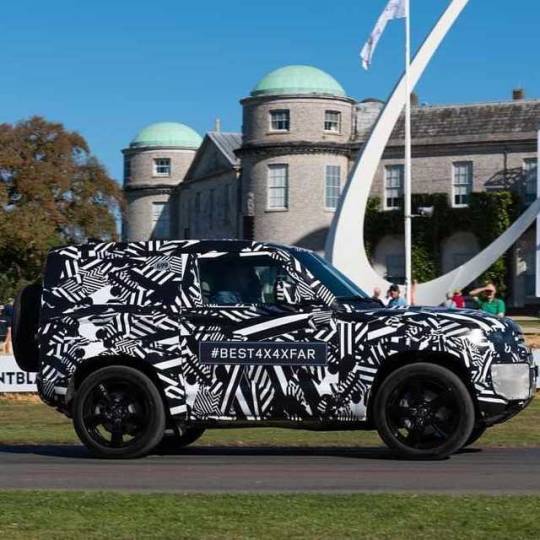
The All-New Defender making its way up the famous Goodwood hill climb Via @landroverukpr #AllNewDefender #landroverdefender #landroverphotoalbum #landroverevolved #Defender2020 #fos2019 (at Goodwood Festival of Speed) https://www.instagram.com/p/Bzm7pAkBr1k/?igshid=31y3mtin06cd
8 notes
·
View notes
Photo

Stick some white duct tape on and they’ll never know! 👀🤦🏽♂️🤦🏽♂️ • • #setstandardsquad #tbellphotography #goodwood #goodwoodfos #fos #goodwood2019 #fos2019 #racecar #car #cars #carphotography #carphotographer #automotive #automotivephotography #automotivephotographer #carporn #classiccars #photographer #photography #nikon #nikonphotography #nikonphotographer #photooftheday #carlife #carlifestyle #carsandcoffee #bmw #bmw3series #3series #dtm #touringcar #touringcars #paddock #bookme (at Goodwood Festival of Speed) https://www.instagram.com/p/B0CSdy4HP0F/?igshid=1iq0bfh83km4f
#setstandardsquad#tbellphotography#goodwood#goodwoodfos#fos#goodwood2019#fos2019#racecar#car#cars#carphotography#carphotographer#automotive#automotivephotography#automotivephotographer#carporn#classiccars#photographer#photography#nikon#nikonphotography#nikonphotographer#photooftheday#carlife#carlifestyle#carsandcoffee#bmw#bmw3series#3series#dtm
2 notes
·
View notes
Photo

Wheel porn at the Festival of Speed. #wheelporn #wheelsofthefestivalofspeed #sauberc9 #porsche935 #ferrari330p4 #porsche917canam #porsche917 #goodwood #goodwoodfestivalofspeed #fos2019 #festivalofspeed2019 #festivalofspeed (at Goodwood Festival of Speed) https://www.instagram.com/p/Bz5Y7CbFmva/?igshid=1dw91au13vlmf
#wheelporn#wheelsofthefestivalofspeed#sauberc9#porsche935#ferrari330p4#porsche917canam#porsche917#goodwood#goodwoodfestivalofspeed#fos2019#festivalofspeed2019#festivalofspeed
1 note
·
View note
Photo

P80/C, oh go on then, if you insist... • • #ferrari #p80c #ferrarip80c #oneoff #488gt3 #ferrari488gt3 #scuderiaferrari #ferraricentrostile #v8 #festivalofspeed #fos #fos2019 #festivalofspeed2019 #goodwood #fosgoodwood #goodwoodfestivalofspeed #goodwoodfestivalofspeed2019 #grrc #goodwoodroadracingclub #chichester #speed #noise #iphonex #iphonography #sunshine #carporn #hillclimb #goodwoodhouse #goodwoodestate (at Goodwood Festival of Speed) https://www.instagram.com/p/BzvGC5Mh-BJ/?igshid=1qe2a3ojb3qhy
#ferrari#p80c#ferrarip80c#oneoff#488gt3#ferrari488gt3#scuderiaferrari#ferraricentrostile#v8#festivalofspeed#fos#fos2019#festivalofspeed2019#goodwood#fosgoodwood#goodwoodfestivalofspeed#goodwoodfestivalofspeed2019#grrc#goodwoodroadracingclub#chichester#speed#noise#iphonex#iphonography#sunshine#carporn#hillclimb#goodwoodhouse#goodwoodestate
1 note
·
View note
Video
Porsche Taycan 3D , original photo taken last year at Fos by Photocutout
0 notes
Photo
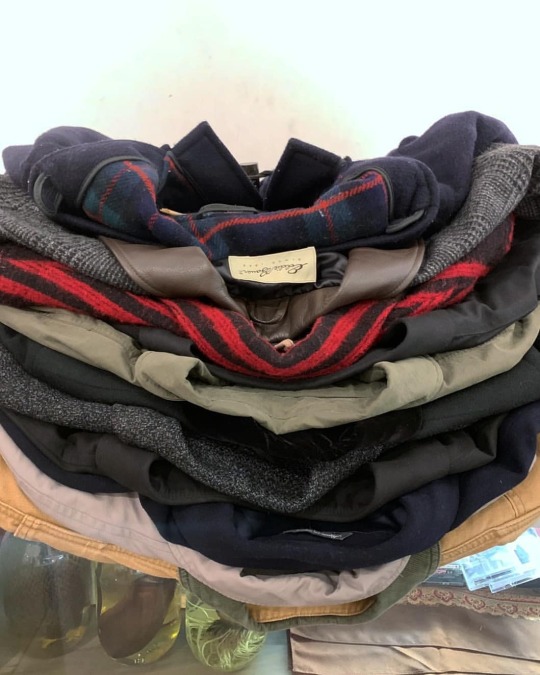
🇺🇸🇺🇸🇺🇸 本日もありがとうございました!🙏 @feverofshizuoka 2019出店で七間町店舗のストックが減る分、本日寝かしていたUS古着の真冬用ヘビーアウターを店頭に大量投入❄️❄️❄️ FOSの準備も含め、先ほどすべてが完了し帰宅しました…! 気合い入っておりますっ🔥🔥🔥 勿論 FEVER OF SHIZUOKA に持っていく分のアイテムも抜かりないラインナップになっております! かなり上質なNewアイテムが揃っています! … 明日ハイツ本店は通常営業 12:00 - 22:00 #FOS2019 出店は 11:00 - about 20:00 どちらも沢山のご来店、お待ちしております🍀 宜しくお願い致します!☀️ . . . #feverofshizuoka #heights_shizuoka #shizuokacity #shizuoka #フィーバーオブシズオカ #古着 #静岡古着屋 #静岡古着 #古着屋 #静岡 #静岡県 #焼津 #焼津市 #野外フェス #音楽フェス (Heights Shizuoka) https://www.instagram.com/p/B4Xqpa1AEv6/?igshid=13rt7efj94xb6
#fos2019#feverofshizuoka#heights_shizuoka#shizuokacity#shizuoka#フィーバーオブシズオカ#古着#静岡古着屋#静岡古着#古着屋#静岡#静岡県#焼津#焼津市#野外フェス#音楽フェス
0 notes
Photo

Join us tonight 5/8pm for the Opening Party! Open Studios final weekend, come by I’m hosting 9 artists and showing my work also. I am so excited to be showing my work at @onyxboutiquesf / @rockandrapture (289 Divisadero St, San Francisco) as a part of ArtSpan’s Open Studios exhibition this weekend! Over 50 new watercolor moons will be on display, and the iridescent and metallic paints have such a dreamy glow, I wish photos could capture it! Come see them in person during the opening reception Friday 5-8p, Saturday 11a-7p, or Sunday 11a-6p! . . . sfopenstudios #artspansf #art #artshow #painting #sanfranciscoartist #moonart #moonpainting #somaarts #rockandrapturesf #fos #fos2019 #openstudios2019 #openstudios #artspanopenstudios (at Rock & Rapture - jewelry • art • music) https://www.instagram.com/p/B4U-CmOB_hG/?igshid=1lej7kktju2vi
#artspansf#art#artshow#painting#sanfranciscoartist#moonart#moonpainting#somaarts#rockandrapturesf#fos#fos2019#openstudios2019#openstudios#artspanopenstudios
0 notes
Text
Everyone’s Peggy: Threats to Seeing.
This space is static. There is little to no movement. The movement that does occur is directly related to mobile phone usage. Eye contact between patients is kept minimal. Heads are locked onto their phones or on the television screen; fixations are controlled by artificial movement. The only desirable eye contact is between the patient and the nurse that beckons them into the next room. The twiddling of thumbs, texting messages to family or friends, accompanied by an obligatory glance towards the phone’s housing; whether it be pant packet, hoodie pouch, or carry-on bag. Outside of that codependency, the occasional side-ways glance is done in secret. That was my way in.
Animals that Saw Me, a photobook by Ed Panar, is one of the biggest references I could draw off of after completing this activity. In the book, Panar creates a visual narrative discussing the fleeting, face-to-face interactions that people have with animals. I make the comparison, between staring at animals and staring at other people, because I think that it touches on the animalistic inclinations that humans retain. The fight or flight instinct, for example, uses staring as a way of preparation. The person or animal takes in the immediate threat through visual context and acts accordingly. Staring, in this context, is as a natural, animalistic instinct. An archaic inclination passed on from human ancestors.
While not all of the images could address the concept of staring, I do believe it to be an interesting gesture on how the staree and starer can be swapped. This addresses aspects of the power dynamic, but in this case you’re never quite sure who instigates (starer) the action and who submits (staree) to it. Of the many observations I had while sitting in a waiting room and performing the act of staring, the power dynamic between the two characters was the most obvious. To me, staring is violating and is used only to manipulate the staree into a submissive status. Garland Thompson reflects on the aspects of intensity associated with staring on page 14.
“We speak of “staring daggers,” “penetrating looks,” “piercing eyes,” “riveting glances,” and “looking somebody up and down.” Such phrases reflect the intensity of being on either side of a staring encounter” (Garland, p. 14).
My observations substantiate Garland-Thompon’s discussion of staring because they exemplify many of the key points outlined in the reading. There are two or more characters being activated in this position. Me, as the starer, have observed the power dynamic at play and the responsibilities that are enacted from that position. After hesitantly establishing an visual confrontation, outside of any consideration for the staree’s comfort or vulnerabilities, I attempted to tame the world with my eyes; jumping innocuously from one waiting room to the next. Of course, this interaction isn’t complete without certain fulfillments. The staree must submit or acknowledge the starers advances through some sort of reactionary impulse. This could be a hand shooting up to cover their face, a surprised jitter, a reluctant smile, or a hostile glare. No matter the outcome, this ballet performs until climax or ceases to provide stimuli. This is where the starer’s role intensifies and his/her duties to the staree become paramount. What goals are going to be met through this? What did I want them to see from me? What did I want them to know from me? How best to communicate this through eye contact alone? The patience of waiting for the right person to sit down and motivating them to talk, none of this should seem foreign to anyone. However, remembering the goals for each conversation once the line has been cast, is both the most difficult part of this conversation and the part with the biggest responsibility.
The context specific prohibition against looking that I had intended to explore, was photographing in a private office space, but I found myself fighting against the compulsion to stare. So, instead of trading one for the other, I did both; staring and photographing. There are a number of power relationships at play while staring in a health clinic. In the waiting room environment, there is an all-too-often overlooked, but very much so present overseer in the form of surveillance footage. The hierarchy of surveillance is a prevalent, pervasive threat to the staree and starer. This outlier interferes with the accessibility that a communal stare indoctrinates. The other prohibition, in this context, is the HIPPA agreement made between patients and healthcare providers. HIPPA is a United States legislation that provides data privacy and security provisions for safeguarding medical information. This safeguards against, but is not limited to data breaches, restrictions on access, broadened security measures, and patient interactions within the facility. I was unaware that photography interferes with those measures at the time.
What is disturbing about this interaction is that it is one sided, invasive, and mostly unsolicited. After two hours in the waiting room, hearing the names being called into the next room, listening to the medical procedures the television played on repeat, I successfully talked to 3 people about this area. John, April, and Emilio. The fourth and final person I talked to was the one who escorted me out of the building, but not before asking me to delete the photographs on my camera and requesting my full name for their records. Her alias was Peggy, but her actual name, after gathering further information on her immigration, was Ndidi.
April was the first person I began to have a visual conversation with. She’s a bold, middle-aged women. She wore pink leopard print, unicorn slippers, and had pinkish-purplish semi-permanent hair colorization. She entered and sat at the furthest end of the waiting room, which looked more like a hallway with chairs. April was figgety, so establishing prolonged eye-contact with her wasn’t easy.
As I stared, I noticed more and more of April’s features. Her skin was a deep tan, almost leathery texture with countless freckles. I took her picture in secret without asking for her permission. Soon after, I asked from across the room,
“What’re ya in for,” this question startled her out of her trance, looking up towards me with an almost lifeless reaction. Her face scrunched up and she replied with a loud and puzzled,
“Huuhhhh?!”
I repeated my question from across the room. Her response was a waving of her dainty hand and a rolling of her head round in a clockwise direction. She replied,
“I been comin’ here for months, lady. They ain’t found nothin’ on me yet worth talkin’ bout,” she continued looking downward, “it’s--been a long road, hah.” She chuckled to herself and half-smiled looking back up at me.
“I’m Alyssa--er, Al for short.” I chortled waving at her with, what I would consider, a long distance handshake.
“Oh, we’re givin’ names now,” she quipped questioningly.
“I’m April--don’t ‘ave any nicknames, but I like the one you got. Sounds funky and for a girl with green ‘air, I’m sure that’s was your--ahaha--goin’ for.” She laughed and then I accompanied her. We conversed in segments. I told her about the picture I had taken of her and she laughed again, saying that she would have never noticed. I asked how this made her feel and she said ‘ain’t no harm if I didn’ see no foul’. John walked in about 8 minutes after April.
John is a middle-age man, but with more seasoning than April. He wore a black t-shirt, blue jeans, and black nikes. He had in airpods and didn’t look like the type of person who enjoyed casual conversation. *note* I’m not making these judgements in real time, I’m only including this information to better visualize the character John made little to no eye-contact outside of his phone’s screen. Occasionally, he would glance upward at the television or around at the faculty when they would meander around the sides of the waiting room hallway. I continued to stare at him, without reciprocated fixation, until one of his wandering glances met mine. Then, another latched on to me without lingering for much longer than the first. Frustrated, I took out my camera and took a picture of him looking back down on his screen. Unhappy with the angle of the image on my LCD screen preview, I took another image. John looked up, but not in time to see my camera angled towards him. Enthused by his reaction, I took another exposure and he looked up to meet my stare as the camera pulled away from my face. He pulled out his airpods without looking away from me as I continued to stare back. Once out, he blinked and the corners of his mouth curled up into a smile; the kind of smile you don’t expect to receive from someone who looks and acts so unamused or bored in a public environment. As he smiled, he laughed quietly, and half-whispered,
“Whaaat--are--you doing, aha,” his shoulders drooped over while he leaned toward my direction anticipating an answer of some sort. If the charisma in his voice didn’t prompt me into talking, his body language did. He sat legs open, arms on his lap, and his face jutting out towards me in some comical fashion.
“I was just--uh--staring at you, but you--well it’s for an assignment in my class, but, uh, you didn’t respond to that. Sooo--”, I replied scatter-brained and eager to get him to talk to me, “I took your picture instead while you were looking around to get your attention. I hope it wasn’t rude or anything. I just, wanted to see what you had to say about everything.” Everything? Really, Al?
John smiled, his head twirled upwards with his eyes as he shook it there. When his eyes came back to mine, he continued.
“Man, I thought I came into the psych ward or something for a sec. You had me scared!” Me and him both laughed, then I asked him why he felt like he was in a psych ward, how the staring made him feel, and why he averted it so much. He said that staring made him feel paranoid or uncomfortable. He said that he wasn’t equipped to handle that type of conversation on this day and that his brain was more so acting to get him ready for his doctor’s appointment. He was overcompensating and he hated doctor’s visits.
Here, we could begin to discuss some of the points outlined in Daniel Segal’s Can You Tell a Jew When You See One?. Here, Segal substitutes the word stereotypes for typifications, which was originally coined by Alfred Schutz. In the essay, he elaborates on problems relating to prejudice, stereotyping or typifications, and how their social construction delegitimizes sensory perception. Sensory perception cannot be the reason for issuing a typification. Social jurisdiction operates to define the terms that we then give onto people from other cultural background or descent because it operates like a machine; giving titles, descriptions, and names to people, places, and things. To exercise what was learned from this essay, I’m taking precautions not to undermine John’s character. Now, John is not like me. His skin is olive toned and he is male. That doesn’t necessarily mean that he’s from African descent nor that his descent effects his character, but his physical makeup does characterize visible attributes. The segment of the essay that I am referring to most directly is on page 238, paragraph three.
“Take the case of whether a person is or is not “African American.”[...] the facts about this matter of identity, independent of a person’s ‘looks,’ are located in ancestry[...] Consider, in other words, the possible outcomes of discrepancies or incongruities between visual signs of identity and a person’s knowable ancestry.[...] Thus, by social conjuring trick--one that alters who it is who is known to have African-American ancestors-the incongruity of white-looking African-Americas is removed from the world that appears before our eyes. The Statistical correlation is tightened, in this cay by exploiting the instability of the supposedly fixed facts about whether someone is or is not ‘African-American’” (Segal, pg. 238).
As I entered into the facilitation of this assignment, I’ve taken precautions to understand typifications, how they operate and how to avoid them in descriptive narratives. That being said, John was comfortable enough to discuss stereotypes with me. He said that he and his family have felt the effects, but that they’ve been subdued by political correctness, informative outreach programs, and efforts in diversity and inclusion. When asked about micromanagement over the situation--in communities, schools, etc.--he said that perseverance is above all else the most paramount.
Emilio was received in the waiting room, along with his grandparents and mother, while John and I were talking.
Proud of my accomplishments thus far, I grew more confident and actively starred at Emilio. I glanced towards his family occasionally, but kept persistent contact on the child. The mother, persuaded by my eye contact, beckoned me over to sit with the family. I asked her about her son. Her heavy, latin accent generated a language barrier, but she still allowed me to interact with the child. He looked to be about 7. Everytime I starred, he unabashingly returned my glances with an assumed childish demeanor. I got his name after many attempts at explaining and gesturing to myself to receive an answer.
Why are children open to acts of starring more so than adults? Is this exception related to childhood development and the absence of socially constructed expectations? Presumably, the answer relies on the age of the child and their experiences with public or social media environments.
I was called into the doctor’s office for my scheduled appointment shortly after talking with Emilio and his family. The visit was conducted as usual. My blood results came back normal. The lumbar puncture confirmed that I had an inflammatory disease which would require medication and future consultations. During our intermissions, where the doctor or nurse would leave the room, I would photograph the room. After I received my prescriptions, I was told that I could leave.
The confrontation with Peggy occurred while I was making my escape from the clinic. Peggy found me attempting to make my way out of the labyrinth of halls that made up the facility. Deliberately walking up to me, she told me that the exit was in the opposite direction.
“Ma’am, the exit is this way,” she said as she pointed in the opposite direction.
“Oh,” I replied, “thank you, I’m sorr--” she interrupted my apology mid sentence.
“I haff been meaning to ask you where did you get dat camera and what are you doing in this place wit it?” She interrogated me in a foreign accent while pointing at my camera and the surrounding walls.
“I am a patient here and I was just taking pictures to check my camera’s settings, y’know? Staying loose, that’s all,” I replied trying to sound as genuine as possible. She wasn’t amused by my response at all.
“Noooooo! You cannot do dat ‘ere. This is a medical facility. That is wrong, very wrong. You cannot do dat ‘ere with other patients privacy. We have people who come in to take pictures for us when we need it...[--]” she rambled on about issues concerning privacy, of which, I was aware of, but didn’t think any of my images infringed upon patient privacy.
“--So, I need to delete my images. Is that what you’re saying,” I interrupted her, “There’s really nothing too invasive with these images, I swear. I’m aware of privacy laws regarding media, but there’s really nothing in here that could come back to you guys. I’d be more than happy to agree to a release form or some kind of disclosure or no compensation agreement” I pulled out the camera with the LCD screen pointed up to show her the images. In preview, I went through the pictures to show her each one carefully. None of them were impressive. Most of them were still frames of objects found in the waiting room and consultation; a chair leg coming in contact with the ground, a stack of pamphlets on nesting table, a rolling chair, doctor’s instruments, John looking down at his ph---oh no.... Peggy was outraged.
“See!! That is a patient, that is no good! You delete all of those images right now. You cannot do that! Can’t you see how that is wrong?! Delete everything,” She commanded.
“Everything?” I questioned, but it didn’t more than a glance to realize her anger and bewilderment. I dutifully obliged and deleted every image I had taken from my duration with her head lingering over my shoulder. Still, I felt determined to question her further.
“What is so wrong with photographs? The camera isn’t a weapon, ya’know. Besides, there are people taking images with their phones irregardless of privacy standards. I feel like the only reason you’re targeting me is because my camera is ostentatious and unconcealable. Besides, I asked this patient if it was ok after I took the shot.” I continued to argue my point while deleting the images. It only angered Peggy.
“There,” I said, “all deleted.”
“Good, but don’t you see how it is wrong to do that?” she, once again, asked. I had already replied to this question twice and didn’t feel like answering it again. I just kept to myself and allowed her to continue. At this point, I felt like a vacuous child being lectured into the ground. Did I feel remorse? Undoubtedly, I felt it, but the fact that I could reconcile with this women plagued me with more, unsurmountable guilt than anything else. What does it mean to be a photographer, to have a degree and uphold certain values, if I can’t convince someone otherwise about its nature? Peggy touched on the small of my back, erging me to exit the facility. Before leaving she had one final question, that I didn’t feel the need to answer after considering the negative connotations involved in the conversation.
“What is name for our records?”
“Oh, I can’t give you that,” I replied solidarily and exited the clinic doors.
Upon looking back, I realize now that Peggy’s confrontation-in particular-illuminates more on the prohibitions of seeing; as well as legal/moral issues involved. Peggy was obligated to stop and lecture me on the legality of the situation. Her duty, in that respect, was to act according to protocol. When I tried to reconcile the situation-albeit-in a frivolous, panicked manner, I was met with more of the same lecture. We didn’t see eye-to-eye on the situation. In a more diplomatic conversation, I could see the conversation being more successful. However, Peggy instigated her side of the conversation with much more emotionally involved gravitas that it overwhelmed me; it brainwashed me into contrition before I could even begin to build my side of the argument.
Binding, legal implications have power over ways of seeing just as much as emotional jurisdiction does or even an acceptance of conversation. Communication is a two way street. Both sides have to be willing to receive and contribute to the discourse. I’ve never photographed in a health care facility. I’ve been advised not to and was aware of the complexities involved both legally and morally. Why did I do it? I did it because I thought I could maybe reason with someone if I got caught or share information about the artform that means so much to me, but retains a heavy stigma in the public eye.
The biggest threat to seeing, in any way, is cowardice. Summoning up the courage to seek discomfort, to be vulnerable, and to be forthright on the discoveries made after the fact, is the key to seeing behind walls; even when you meet someone like Peggy.
“To see things thousands of miles away, things hidden behind walls and within rooms, things dangerous to come to, to draw closer, to see and be amazed” (Secret Life of, 2013).
Works Cited
Kuku, David. Unknown. n/a.
Panar, Ed. Animals That Saw Me. Vol. 1, Spaces Corners, 2011.
Segal, Daniel. “Can You Tell a Jew When You See One?” Judaism: A Quarterly Journal of Jewish Life and Thought, vol. 48, no. 2, 1999, pp. 234–238.
Stiller, Ben, et al. The Secret Life of Walter Mitty. Amazon Prime Video, 201th Century Fox, 5 Oct. 2013.
“What Is Staring?” Staring: How We Look, by Rosemarie Garland-Thomson, Oxford University Press, 2015, pp. 13–17.
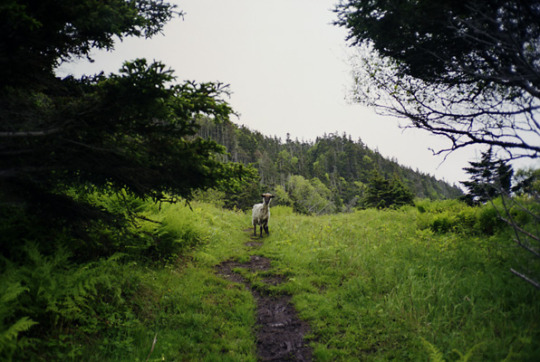
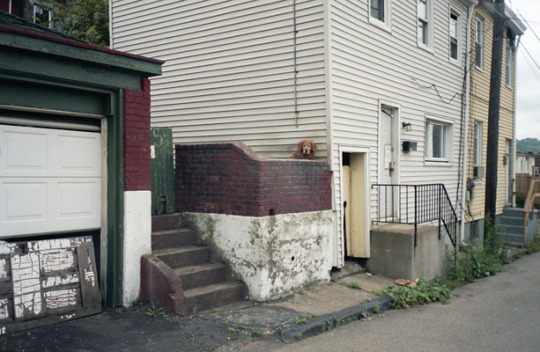
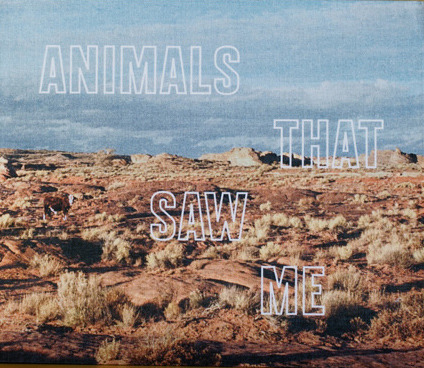

0 notes
Photo

Some shots from our time @fosgoodwood #fos2019 #festivalofspeed @78official https://www.instagram.com/p/Bznh5TbBfVT/?igshid=1vi9ntwehk5bz
0 notes
Photo

The Ultima RS seemed to be stuck out on a plinth all by itself in the rain at Festival of Speed but it looks great and should be ballistically fast. #fos #fos2019 #fosgoodwood #festivalofspeed #ultima #ultimars #carporn #carphotography #automotivephotograpy #nikon #nikond7100 via Instagram https://ift.tt/2JFsuvH
2 notes
·
View notes
Photo

FOS.2019--DeTomaso-12
"Goodwood Festival of Speed 2019: De Tomaso P72."
By G Murfitt
#ImageAuto#G Murfitt#Super Car#Wrooom#Wroom#Car#Auto#Automotive#Automotive Tumblr#Luxury Car#Supercar#Supercars#P72#Detomaso#Fos#Fos2019
20 notes
·
View notes
Photo

From watching @youtube to being a YouTuber invited to drive the @fosgoodwood hill climb in 3.5 years 😜 Video now live (LINK IN BIO) Thanks to @jeep_uk and @alfaromeouk Starring @joeachilles @stef_abtv @supercarsoflondon @seenthroughglass #petrolped #jeep #jeeptrackhawk #goodwood #goodwoodfos #fos2019 — view on Instagram https://ift.tt/2LvVXcx
0 notes
Photo

An Emergent City built of numerous pieces of electronic gadgets and wires for people to contemplate the future. 🤔 #goodwoodfestivalofspeed #fos2019 #artproject https://ift.tt/2YHaKXo
0 notes
Link
Trends in Brief
Plastics Kickback
Despite almost unprecedented attention and activity, responses to pervasive plastic pollution have so far largely failed to address the root causes or avoid unintended consequences. We remain desperately addicted to this cheap, ubiquitous material.
Migration and climate crisis
Migration reached its highest point since WWII in 2018 and climate change will become a major driver of it in years to come, potentially sparking a humanitarian crisis and protectionism. Will the world put in place the structures and systems to cope?
Nationalism marches again
Nationalist governments and sentiment are rising around the world. We may be leaving the globalist era and moving into a period of fragmentation and competition. If so, navigating this divisive narrative will be crucial to effective action on sustainability.
The onlife
Half the world will be online in 2019. This almost unregulated space feeds off our attention, herds us into echo chambers and could have some serious consequences for society and our ability to create change.
The rise of participatory democracy
As the globalist vs nationalist debate intensifies, citizens and governments are experimenting with new ways to come together and make decisions – a local antidote to global issues.
Changing consumerism in Asia
Lifestyles with heavy environmental footprints are becoming the norm across the world, but in Asia there are faint hints of a new flavour of consumerism brewing.
Biodiversity in free fall
We are experiencing a sixth mass extinction event that undermines the natural systems upon which our economy is built. There are signs of restoration and regenerative approaches, but they need joining up and widespread adoption to have lasting impact.
What does this mean?
The seven areas of changes will play significant role in shaping the near future, and the external context for addressing global challenges.
How do we respond?
The tide must be turned. Any approach to sustainability fit for the 2020s must target the structural and mindset level, something we’ve seen sparingly to date.
Addressing 3 global challenges:
supply chains and livelihoods,
staying below 1.5 degrees, and
sustainable nutrition
are regarded as priorities of work by the Future Forum.
#sustainability#plastic waste#biodiversity#migration#climate change#nationalism#online life#participatory democracy#Consumerism#consumption#sustainable supply chain#1.5 degrees#sustainable nutrition#future forum
0 notes
Photo
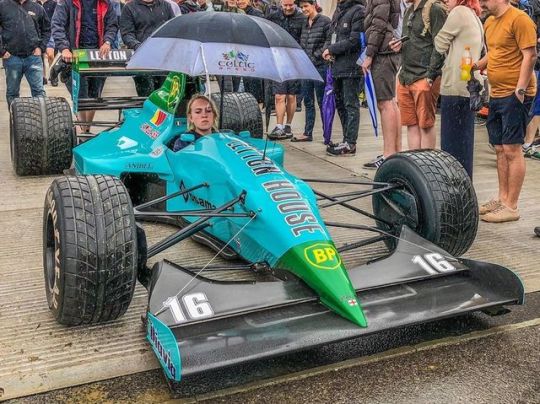
Just seen in the F1 pit lane at Suzuka 😋... • • #leytonhouse #marchf1 #leytonhousemarch #historicf1 #typhoonhagibis #japanesef1 #japanesegrandprix #historicracing #festivalofspeed #fos #fos2019 #festivalofspeed2019 #goodwood #fosgoodwood #goodwoodfestivalofspeed #goodwoodfestivalofspeed2019 #grrc #goodwoodroadracingclub #chichester #speed #noise #iphonex #iphonography #sunshine #carporn #hillclimb #goodwoodhouse #goodwoodestate (at Goodwood Festival of Speed) https://www.instagram.com/p/B3eCb6UBApa/?igshid=7xb80go811gu
#leytonhouse#marchf1#leytonhousemarch#historicf1#typhoonhagibis#japanesef1#japanesegrandprix#historicracing#festivalofspeed#fos#fos2019#festivalofspeed2019#goodwood#fosgoodwood#goodwoodfestivalofspeed#goodwoodfestivalofspeed2019#grrc#goodwoodroadracingclub#chichester#speed#noise#iphonex#iphonography#sunshine#carporn#hillclimb#goodwoodhouse#goodwoodestate
0 notes